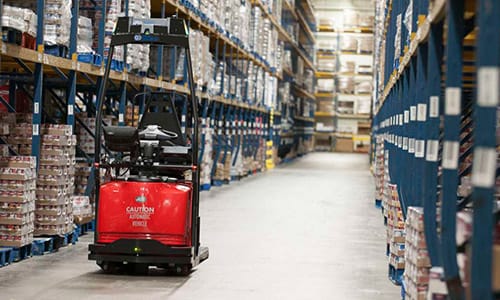Fleet replacement, Part 2: Fact-finding tools to help determine when to retain, reallocate, replace, or remove your lift truck
- share

It can be a daunting task to track and analyze individual truck and operator hour meters, use rates, and repair and maintenance fees. In addition, tracking these numbers can cost you and your workers a lot of time. Fortunately, it’s never been easier to enhance your fleet's productivity and profitability, as there are time-saving web-based tools that can do all the tracking, analyzing, and reporting for you.
It can be a daunting task to track and analyze individual truck and operator hour meters, use rates, and repair and maintenance fees. In addition, tracking these numbers can cost you and your workers a lot of time. Fortunately, it’s never been easier to enhance your fleet's productivity and profitability, as there are time-saving web-based tools that can do all the tracking, analyzing, and reporting for you. Best yet, much of the work can be done from your office with a few clicks of a button.
In Part 1 of our fleet-replacement blog post series, we addressed questions to ask when determining if it’s time to replace your truck. Now we’re going to examine two tools that can help you make fact-based decisions — rather than assumptions — to more efficiently determine when your trucks need to be replaced.
Tool 1: Maintenance monitoring
When you’re deciding whether to replace a truck, there are two key factors to consider: which machines are operating the best (high utilization, low maintenance costs) and which are costing the most to operate. In a typical five-day, two-shift workweek, it’s common for a lift truck to operate for roughly 40 hours. If that truck is down for a day or even a few hours, that’s lost productivity — and revenue.
Using maintenance monitoring software can help you analyze the costs and age of individual equipment units, giving you a better sense of your fleet’s total operating costs and per truck costs. Most contemporary software can then go into more-granular detail to determine whether it’s cost-effective to keep the equipment or whether it’s starting to cost more than desired to keep the unit operational.
Success story: A nationwide food distributor needed a system to track its fleet inventory maintenance data across its North American facilities. The company implemented a software-based fleet asset management system that allowed its distribution center managers to analyze individual unit costs and gauge fleet productivity. This data helped the distribution team lower maintenance costs across its warehouses and better budget the following year.
Tool 2: Reporting and analytics
A telematics system is another tool that provides data to determine whether to retain, reallocate, replace, or remove equipment. These tools can drill down on individual truck utilization rates, usage histories and operator hour meters to help pinpoint which trucks are critical to your operations.
Telematics systems can also monitor the impacts and fault codes on each individual truck, which can have a direct correlation to a truck’s maintenance frequency. The ability to collect and report fault codes from equipment can draw attention to maintenance issues in a timely manner so the truck can be investigated and, if necessary, repaired before a bigger issue or lengthier downtime occurs.
When a web-based application combines the maintenance monitoring data from Tool 1 with the telematics data from Tool 2, the cumulative information available can help you better determine when to retain, reallocate, replace or remove your equipment.
Success story: Operational efficiency and productivity are key components of most company’s bottom line. To stay competitive in the industry, one company installed a fleet management and warehouse optimization system to track fleet maintenance issues, encourage operator accountability, and inform management decisions. This system allowed managers to collect and analyze real-time data about their electric lift-truck fleet and generate reports to ensure the trucks were productive during the busiest times of the day. The system also helped streamline both preventive and planned maintenance by notifying the technician when scheduled maintenances were due.
Use these monitoring and reporting tools to look closely at your truck’s real-time data and decide —based on calculated facts — when it’s time to replace your lift truck. Basing your decisions on facts will help you better optimize your operations and run more efficiently.
Submitted by John Rosenberger on Mon,10/02/2017 - 13:02
Plant Services, Today's Optimized Facility
Read the original post: https://www.plantservices.com/blogs/todays-optimized-facility/fleet-replacement-part-2-fact-finding-tools-to-help-determine-when-to-retain-reallocate-replace-or-remove-your-lift-truck/


